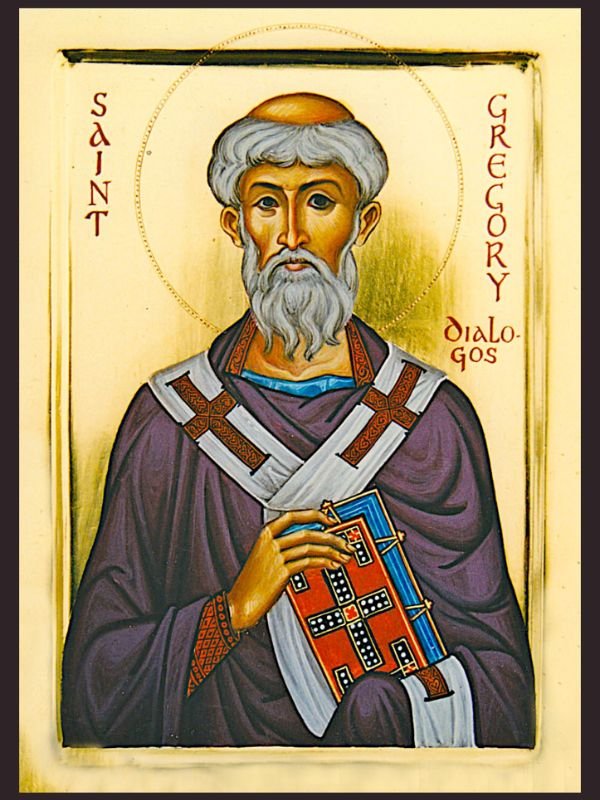A History of Christian Contemplative Prayer
A brief overview of the history of contemplative prayer within the Christian tradition – the lineage of Christian meditation.
Contemplative Prayer Started with Jesus
Jesus exemplified contemplative prayer through His intimate relationship with God. He repeatedly reminded his followers that “I and the Father are one” (e.g., see John 10:30). This mystical statement makes it clear that Jesus was praying and living contemplatively; that is, from the place of oneness with the Divine.
This contemplative way of praying has its roots in the wisdom that Jesus shared in his Sermon on the Mount when he taught us how to pray. He said:
“When you pray, go to your inner room,
close the door and pray to your Father who is in secret.
And your Father, who sees in secret, will reward you.”
When you pray, go into your inner room… Matthew 6:6
And so in contemplative prayer, we retreat into our “Inner room” – the Holy Silence at the core of our being within which we are transformed from the inside out. Father Thomas Keating calls this process of inner awakening the “Divine Therapy” during which, slowly but surely, we are guided in breaking through the psychological barriers that exist between ourselves and God.
Following in the footsteps of Jesus, the Apostolic Fathers and Mothers, in the 1st and 2nd centuries, continued this contemplative tradition, referring to their meditative practice as “Prayer of the Heart.” (The Apostolic Fathers and Mothers were Christian mystics who either knew one or more of the 12 Apostles personally or were significantly influenced by the Apostles.)
Following in the footsteps of Jesus, the Apostolic Fathers and Mothers, continued this contemplative tradition, referring to their meditative practice as “Prayer of the Heart.”
In turn, the Apostolic Fathers and Mothers taught meditation to the early Desert Fathers and Mothers. These were Christian mystics – monks and nuns who began moving out of the cities and into the deserts of Egypt, Palestine and Syria during the 3rd and 4th centuries, in order to live more Christ-like, ascetic lives and practice this most intimate, contemplative form of prayer, or meditation.
One of many notable Desert Fathers was John Cassian, who, in the 5th century, recorded the essential teachings that he gleaned while in the Egyptian desert in his highly influential book, The Conferences. This book contains one of the earliest written records of meditation instruction in the Christian faith. In it, he writes:
“Everyone who longs for the continual awareness of God
should be in the habit of meditating on God
ceaselessly in his heart,
after having driven out every kind of thought.”
The Conferences, p. 379
Pope Gregory the Great referred to Christian meditation as “resting in God”.
In the 6th century, Pope Gregory the Great referred to Christian meditation as “resting in God”. In this resting, he said, we are not so much seeking God outside of ourselves, as we are experiencing what is already there, within us.
And so, as you can see, Christian contemplative prayer was an integral part of the Christian wisdom tradition since Jesus. An interruption came, however, which caused the practice of contemplative prayer to be confined to the monasteries.
During the height of the Middle Ages, and increasingly in the 17th century, during the Enlightenment or “Age of Reason,” the more intellectual approach to prayer (often called “prayer of the mind” – prayer that uses words and thoughts to talk to God) began to eclipse the more mystical and meditative “prayer of the heart.” And so, at this point in the life of the church, Christian contemplative prayer began to be relegated to the monasteries — no longer practiced by the laity. It is, therefore, within the monasteries, that the tradition of Christian contemplative prayer was preserved.
It wasn’t until the 1960s – when the 2nd Vatican Council opened its door to a robust and growing revival of Christian meditation and contemplative prayer – that Christian meditation ceased to be “cloistered.” In response to this Vatican II invitation to revive the contemplative teachings of early Christianity and to present them in updated formats, three Trappist monks at St. Joseph’s Abbey in Spencer, Massachusetts, swung into action. They were Fathers Thomas Keating, William Meninger, and Basil Pennington. Based on the early Christian sources – especially the 5th-century work of John Cassian and the 14th-century contemplative prayer manual called The Cloud of Unknowing – they developed a simple method of silent prayer for contemporary people called Centering Prayer. The name Centering Prayer came from Thomas Merton’s description of contemplative prayer as prayer that is “centered entirely on the presence of God.”
By the 1970s, this contemplative awakening in Christianity began in earnest. For the first time in 1500 years, lay Christians had the opportunity to engage in a serious practice of meditation without having to turn to other traditions. This has had a profound effect on how Christianity is being understood and practiced today, leading to a Christianity that is not so much tied to intellectual dogma but increasingly to the deep mystical insight that comes to us from the meditation cushion. This contemplative perspective has also led to a new, deeper, broader, more mystical, and nondual interpretation of the ancient core texts found in the Christian tradition.
Today, contemplative prayer is being practiced by people all around the world, each contributing to a robust renewal of the contemplative dimension of Christianity. And so, it’s important to understand that Christian contemplative prayer is not something new. Throughout history, there have been a cloud of witnesses in Christianity that have practiced, written about, and taught Christian meditation. Contemplative Prayer has been, and indeed continues to be, a vital and integral part of the Christian tradition.
Listen to Dr. Jana Rentzel’s Guided Christian Meditations
and/or attend her weekly class Living in Divine Presence live on Zoom.
Additional Resources on Contemplative Prayer
Guided Contemplative Prayer
Experience contemplative prayer for yourself by listening to one of our guided Christian meditations.
Finding Peace Meditation - A guided meditation to help you access the peace that abides at your innermost core that is always there for you,
Cultivating Love and Peace - A guided meditation to help you experience the Divine Love and Peace at your innermost core and then to extend this ever-present love and peace to others. Living from this place of Divine Love and Peace will transform both yourself and your world..
Stillness with God Meditation - This guided meditation provides you with an opportunity to pause from the many activities of your daily life and to focus on God – to be still in the presence of God, to “be still and know God.”
Meditation on Divine Love - This meditation will help you to access the infinite source of unconditional spiritual love that lies deep within you, allowing it to heal you from within and ripple out to touch all others in your life.
How to do Christian Meditation or Contemplative Prayer.
“How to do Christian Meditation” is a short, animated film that introduces meditation to people who have never meditated before, especially Christians who think that it is not part of the Christian tradition. Meditation belongs to the Christian tradition too as the prayer of the heart – contemplative prayer – where we let go of all thoughts and words.
Jesus taught us how to meditate when he said, “Go into your inner room, close the door and be there in the presence of God." The early Christian fathers and mothers taught us to guard the heart from negativity and emotion by laying aside all thoughts. In Christian Meditation, we enter into the inner room, in our heart of hearts, to begin the essential spiritual journey. As we mediate daily, we find deeper stillness, silence and simplicity that begins to transform our minds, our emotions and our daily life. If you’re serious about finding peace, be serious about learning how to meditate.







The ability to live with a clear and direct awareness of Divine Presence is available to everyone, not just to prophets and mystics. Developing this ability lies at the heart of all the great spiritual traditions of the world, including the western traditions.